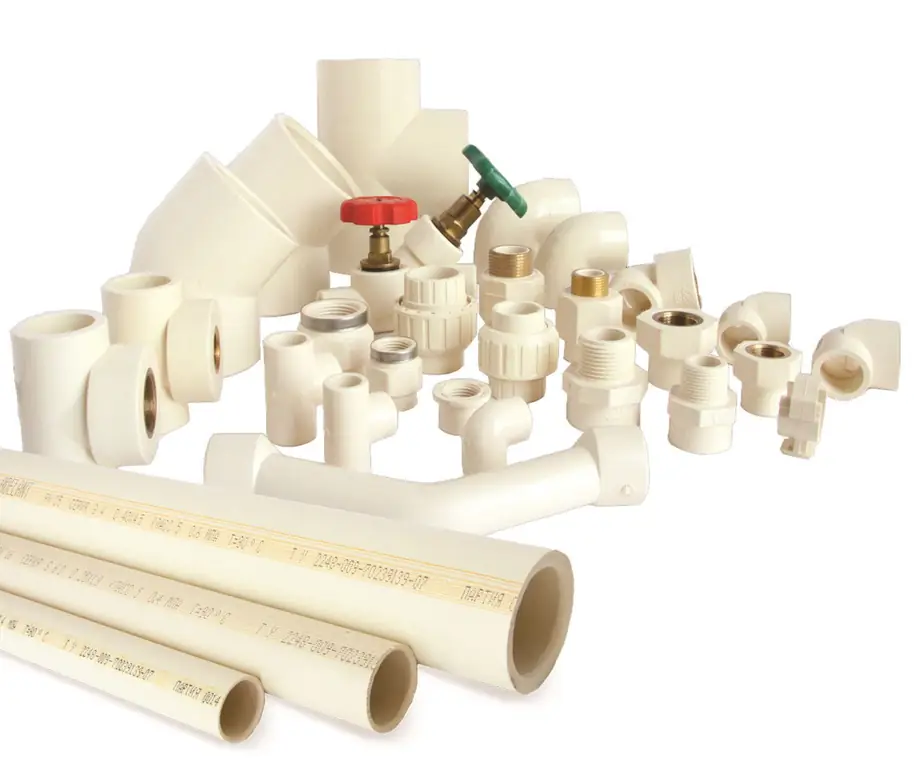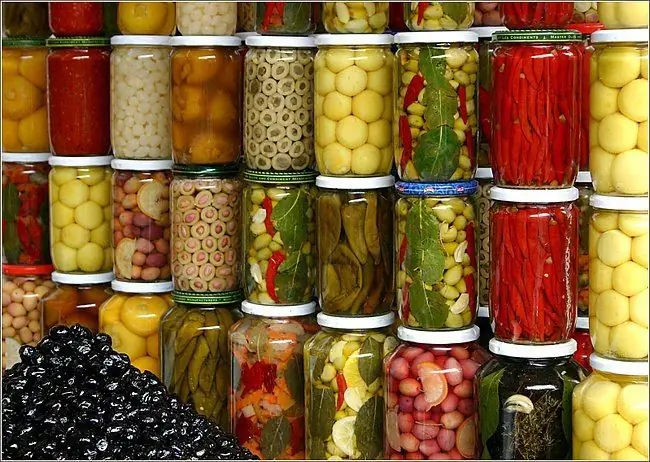
Table of contents:
- Author Bailey Albertson [email protected].
- Public 2023-12-17 12:53.
- Last modified 2025-01-23 12:41.
Diseases of cabbage and methods of dealing with them. Part 2

In the previous article, we looked at some of the diseases that affect cruciferous fruit crops, in particular cabbage. Unfortunately, there are a lot of such diseases, and your harvest is constantly at risk. Therefore, you should thoroughly approach the preparation of the soil and seeds for sowing, as well as storage facilities in which vegetables will spend the winter.
This time I will tell you about white and gray rot, black leg, keel, cabbage phomosis and black spot. You will learn about the symptoms of these diseases, their causative agents and methods of prevention.
The main thing to remember is that the soil in which you plan to grow cabbage must be healthy and clean. It is very important to use regular crop rotation at all times.
Content
- 1 White rot
- 2 Gray rot
- 3 Black leg
- 4 Keela
- 5 Phomosis of cabbage
- 6 Alternaria cabbage
- 7 Videos on fighting cabbage diseases
White rot
The causative agent of white clay is the sclerotia of Whetzelinia sclerotiorum. Such sclerotia are constantly accumulating on uncultivated meadow lands. To get rid of them in the case when you have mastered such a plot for a garden, sowing green manure or cereal crops is recommended for the first 2-3 years. After they are plowed in, the microflora of the soil is activated, and the infectious background will greatly weaken.
It should be noted that not only cruciferous plants, but also plants of all types are susceptible to white rot. In addition, the sclerotia of Whetzelinia sclerotiorum are not only present in the soil, but also feel quite comfortable inside the storage. For their development, they need a low temperature and high humidity, therefore plants in open ground are exposed to infection during the ripening period. In greenhouses, even in winter ones, where the climate is hot and mostly dry, it is difficult for the disease to develop.
How to recognize white rot on cabbage? Pay attention to the surface of the head of cabbage. Infection is evidenced by the mucousness of the outer leaves and the formation of a white cotton-like bloom between them, which can form black foci about 3 cm in size on the head of cabbage. Heads of cabbage, which are heavily overripe before harvesting, broken and slightly frozen, are especially susceptible to infection.

If you notice signs of the disease, immediately remove such a head of cabbage from the rest, as it will rot very quickly, infecting the neighboring ones
To avoid white rot during storage, follow these steps:
- Observe a 6-7 year rotation;
- Harvest cabbage in a timely manner;
- Avoid injuring the heads of cabbage;
- Keep a few cover leaves on the heads;
- Thoroughly clean and disinfect storage before placing vegetables in it;
- Cabbage should be stored at 0-1 degrees.
Gray rot
The causative agent of gray rot, the fungus Botrytis cinerea, belongs to the facultative parasites that infect plant tissues that are weakened for any reason. Infection usually occurs during the ripening period and is especially favored by rainy, damp weather. With the defeat of gray rot, the likelihood of developing mucous bacteriosis is high.
Sources of infection are plant residues in the soil on which vegetable crops are grown. In addition, any plant family is susceptible to infection with gray rot, like white rot.
The fungus Botrytis cinerea releases toxins that cause tissue necrosis. Therefore, cabbage varieties, characterized by the rapid destruction of chlorophyll, are more affected during storage than others. It is easy to detect the symptoms of the disease: the head of cabbage is covered with a fluffy brown coating, in which the spores of the fungus ripen, capable of infecting neighboring heads of cabbage. The next stage is the licking and rotting of the leaves.

To prevent your crop from becoming contaminated with gray mucus, use the same methods when harvesting and storing as for fighting white mucus. These diseases are similar in symptoms, and the type of spread, and development in certain conditions.
Blackleg
This disease belongs to fungal, and its causative agent can infect cabbage heads through the soil for several years in a row. Many varieties of cabbage are subject to it, and crops such as cucumbers, radishes, tomatoes and lettuce. The onset of the disease occurs during the growth of seedlings, and weakened specimens are most susceptible to it.
As soon as the shoots begin to appear, the black leg affects the root parts and root collars of the shoots; the affected area darkens. In acidic soils, this disease is especially easy to spread. With excessive watering or waterlogging, the disease is activated. The roots of diseased plants stop growing, respectively, the whole plant withers and becomes rotten.
How to avoid contamination of vegetable crops? First of all, lime the acidified soil on protected ground, for this you will need 1 kg of lime per 1 sq. Furnace ash is suitable as a top dressing (100 g per 1 sq. M.)

As soon as you notice the symptoms of infection on the seedlings, start watering with Bordeaux liquid (1 liter of solution per 1 square meter of soil). After that, sprinkle the treatment with a 2 cm layer of sand.
It is also very good to water the plants as a preventive measure with a solution of potassium permanganate (5 g of potassium manganese per 10 l of water). Loosen the soil in the garden beds often. If you grow cabbage in a greenhouse, ventilate it regularly.
Keela
This fungal disease is one of the most dangerous for cruciferous plants. It is not easy to find a keel: in the initial period of development, the affected seedlings are indistinguishable from healthy ones. The defeat will become noticeable after the root system is covered with swellings or growths. They are the same color as the parent plant, but over time, the roots begin to rot. After that, all plants will be infected through the infected soil within 4-5 years.
While developing, the disease stops the growth of seedlings: the leaf blades turn yellow, the heads of cabbage do not form or do not increase in size. The spores of the fungus are transferred to the nearby weed and winter safely in its roots. That is why weeds should be destroyed even after harvest.

In order to successfully fight keel infection, the condition of the soil should be monitored. Lowering the temperature of the soil to 15 degrees, and increasing the humidity to 98% will stop the activity of the keel and its destructive effect.
It is best to plant cabbage in areas where carrots, legumes and potatoes have grown in previous years. Crop rotation of cabbage and other crucifers to avoid keel damage is from 5 years.
Liming the soil so that the acidity level reaches 7-7.2. also discard seedlings. Infected specimens should be destroyed, preferably burned. All weeds should be carefully removed during growth and maturation. Combine watering and feeding with hilling, this will provide additional growth of the root system.
Phomosis of cabbage
Phomosis is also called dry rot. It infects cabbage at any stage of its ripening and significantly reduces the germination properties of seeds. If at least one focus of infection has appeared on the garden bed, then by the end of the growing season up to 20% of all plants can get sick.
Leaves, roots, stems, cotyledons are affected by the pathogen. Seeds and pods. The cotyledons are covered with faded light gray spots, inside which the fungus pycnidia develop in the form of black dots. Usually, infected cotyledons die. In seedlings that have emerged from diseased seeds, the bottom of the stem is affected by the disease: it darkens, it becomes wet, the plant dies. On the surface of cabbage leaves of the first year of life, spots of 1-1.5 cm in size of gray-brown appear, in the center of which there are black pycnidia of the pathogen. Dry rot begins to develop on the root system and in the stumps. The plant turns yellow, the head of cabbage does not develop and some of the roots are lost. On the surface of the testes, along the stems, pods and petioles, brown spots with a black border appear.

The pods that are affected begin to deform, crack, and bring back underdeveloped infected seeds. The surface of such seeds is dull and covered with pycnidia.
Phoma is spread by conidia that form in pycnidia. Activation is facilitated to a large extent by the temperature of 21-25 degrees, high soil moisture and air humidity above 60%.
Fomoza fungus, even in winter conditions, is well preserved in the soil on plant debris. It also remains viable in seeds for 4-7 years. Can be spread by insects, raindrops, wind and direct contact.
Alternaria cabbage
This disease is also called black spot. It causes particular harm to the testes, up to 30% of all plants can get sick. When damaged, pods, seedlings, leaves and seeds are affected. Spots of yellow, concentric shape appear on the surface of the leaf. The affected tissue dies off and a dark brown coating appears on its surface. Not only the external, but also the internal leaves in the head of cabbage are affected, from this the commercial qualities of the cabbage are significantly deteriorated.
Affected seeds give shoots, in which the cotyledons and stems are already diseased. Numerous spots and stripes of black color develop on them, some of the plants die.
Alternaria causes the greatest harm to the pods. Their surface is covered with gray-brown spots, and the tips are covered with a dark coating of a velvety structure. Diseased pods have a wrinkled appearance, they dry out and crack. The seeds inside them are already infected with the fungus, they are puny and give a very low germination rate.

Just like phomosis, Alternaria hibernates in the soil, on plant debris, well preserving its qualities, and also in seeds it is the seed infection that is the main source of infection and subsequent death of seedlings.
The infection is activated and especially manifests itself at a temperature of 25-35 degrees, with an incubation period of 2-3 days. At the same time, the fungus retains its ability to infect plants at a temperature range of 1 to 40 degrees.
Video about fighting cabbage diseases
As you can see, cabbage diseases are a rather big problem for gardeners. But it is quite solvable if you adhere to the tips and recommendations outlined in this article. We wish you an excellent harvest and strong heads of tasty and healthy cabbage!
Recommended:
How To Install A Warm Floor Electric, Infrared, Film Under Different Floor Coverings (with Video)

Installing a warm electric floor with your own hands. Practical advice on choosing the type of underfloor heating, recommendations for the installation of cable and film floors
Making Garden Paths With Your Own Hands - Tips + Video

Practical advice on the construction of paths in the garden. Materials used, recommendations
Diseases Of Tomatoes And Methods Of Dealing With Them + Video

Practical advice on how to avoid tomato diseases. Description of diseases and their causes
What Can Be Prepared For The Winter: Recipes For Preparations From Mushrooms, Cabbage, Tomatoes, Cucumbers And Other Vegetables + Video

Recipes for preparations for the winter from mushrooms, cucumbers, tomatoes, bell peppers. Salads, cuts, marinades, essential foods, useful tips
Barley Porridge With Vegetables: Step-by-step Recipes, Including In A Slow Cooker And With Mushrooms, Photo And Video

Step-by-step recipes with photos of pearl barley porridge with vegetables. Different cooking methods: on the stove, in the oven, in a multicooker
